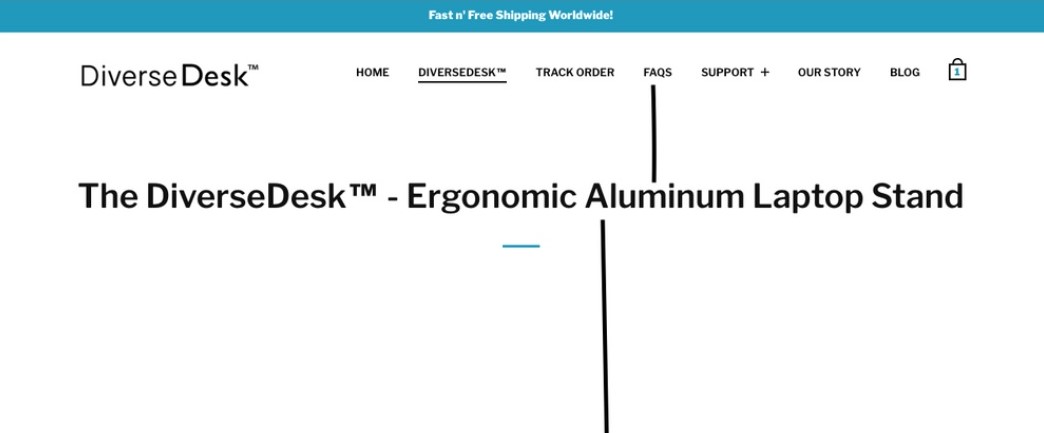How to Removing white space between sections in Shopify?
For any online trader, the Shopify platform is one of the most successful markets. Every year, millions of shoppers visit this marketplace to discover what they want to buy; as a result, its income is incredible. However, since there are so many shops with many items in this Shopify marketplace, it is very competitive. Shopify is interested because of its functionalities and additional resources for Shopify store owners.
This article will assist store owners in removing white space Shopify without disrupting the spaces between terms.
About white space
Is white space important?
There are various essential elements of eCommerce architecture. For obvious reasons, all of these items, such as the cart, navigation bar, and CTAs, are crucial to an eCommerce shop’s success. Each aspect serves a particular purpose and does so admirably.
Whitespace is a page feature in and of itself — a lovely one that can significantly benefit. But did you know that whitespace is as essential as well as beautiful? Sometimes, you really want to remove white space Shopify since it may look annoying.
On the bright side, whitespace may be used to monitor how a user communicates with the content on a website, which is especially useful in the eCommerce sense.
You might be wondering how whitespace would potentially govern user interaction.
It is achieved by three universal principles: concentration, organization, and emphasis.
Designers will have a huge effect on their eCommerce brand’s popularity (or that of their clientele) by guiding where consumers look, scroll, and press by using these three tenets of whitespace.
1. Whitespace will help draw attention to your eCommerce website
By freeing the senses from clutter and uncertainty, whitespace offers subconscious guidance for the user’s eyes. Ambiguity is the polar opposite of concentration, and it happens because there is no way to tell which aspect to investigate.
Designers of both types understand how crucial it is for consumers to exit with the correct message (or have completed the desired action). Over everything, the design is a medium for sharing ideas and shaping behavior.
Whitespace enables consumers to access a single post that is “loud and clear.”
2. Whitespace is an important organizational method
Many websites are not structured to emphasize a particular feature but rather a collection of items. This is particularly valid in eCommerce, where consumers must be persuaded to browse through a list of items and engage with product collections and categories on occasion.
3. Whitespace may be used to draw attention to essential information
As if it weren’t enough, whitespace may even be used to emphasize essential components. By putting an “island” of content in the center of a “sea” of whitespace, the user’s eyes are forced to concentrate on the highlighted feature.
Color and proportion can be seen to tremendous advantage when combined with plenty of white space. Whitespace may be used to guarantee that the consumer does not look in a particular direction by inserting only a splash of color and the correct amount of visual weight.
White space control
In Liquid, you can delete whitespace from the left or right side of a made tag by adding a hyphen in the tag syntax {{-, -}}, {%-, and -%}.
And if it doesn’t produce code, every Liquid line in your template would usually produce an empty line in your made HTML:

There are two blank lines in the made template:

You can remove created whitespace from the made prototype by adding hyphens in your Liquid tag ({%- and -%}):


If you need to monitor the whitespace on one side of the Liquid tag, use the hyphen on the opening or closing tag. A hyphen is used on the closing Liquid tag around [customer.name] in the illustration below.


Guides on removing white space shopify
Removing white space shopify between text
Step 1: Insert
For eg, consider the string {{" Welcome to Starbucks! "}}, which has several whitespaces on the left and right sides.
At the end of the string, we can insert the string code as seen below.
Input
{{ " Welcome to Starbucks! " | strip }}
Step 2: Outcome
After accessing the input, all the spaces on both sides of the previous example would be deleted from the output:
Output
Welcome to Starbucks!
Removing white space shopify between sections on the site

Step 1
Build a theme backup first, so style updates are not versioned, and if anything goes wrong, you can still return to your backup. Navigate to Online Store > Themes, choose Actions > Duplicate. Completed!
Step 2
Go to Actions > Edit code, and then open the Assets/theme.scss.liquid file in the editor that appears. Find this piece of code (it’s best to find by looking for /* — Site wrapper — */).
Step 3
The last line of the above code must be updated. The padding property’s three values are shorthand for TOP MARGIN, LEFT & RIGHT MARGIN, and BOTTOM MARGIN, so lowering top and bottom margin would offer you the desired outcome.
Save and have a peek. Tweak if required, and make sure to search other pages as well, as this wrapper affects other sections.
Final thought
This article “Removing white space Shopify” provides basic measures for even the most inexperienced Shopify users to remove all unintended spaces. Furthermore, we expect that online sellers can have a better understanding of Shopify.





